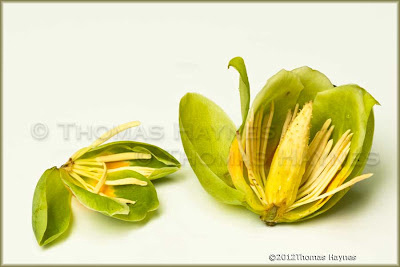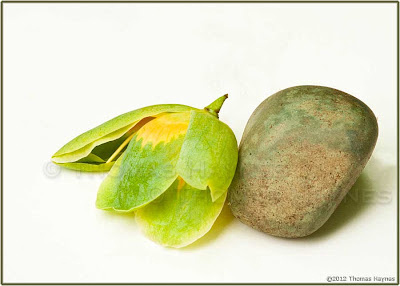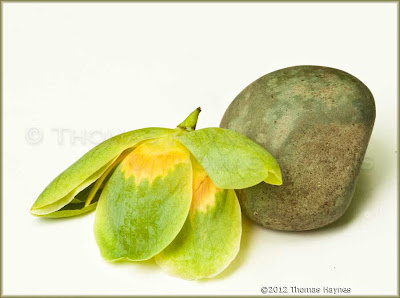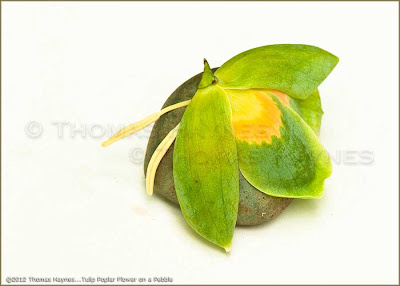High above me tulip poplar trees reach for the sun and hide a beauty not seen until it the wind comes. Then a flower may break loose and tumble to the ground. From the trees where I stood, the flower may fall from 50 to 70 feet. Often the tulip poplar flower will break into parts and leave incomplete flowers as shown. These two sections were in different areas of the woods. Did you know these straight, tall trees have flowers? Scarcely will the flowers be noticed by a passerby.
I found art in nature with these flower sections and a pebble nearby. My interpretations came from making arrangements of the flowers and the pebble then taking the photographs. This as with other forms of art will find favor with some viewers. Others may wonder why I think this is art and believe I wasted my time.
A very good thing about art: Art comes in all varieties and so does human taste and preferences in such.
I believe the images became more appealing as the arrangement was altered. The one below has better balance to the eye than the one above.
The final image is next. Read further to see how the photography was done. More than that, enjoy this simple view of natural things forming a unique still life composition.
HOW THESE PHOTOGRAPHS WERE DONE
For anyone interested, I will tell exactly what I did to take these photographs. I looked for a backdrop and the flower was placed first on a wood railing near where I was standing. That did not show the flower well enough. I decided a white background was wanted and for that got a piece of white foam core board. The flower sections and pebble were arranged. The sunlight was quite spotty and I had to be certain the light was on the subject and at an angle to best show the tiny treasures from nature.
Exposure needed to show the poplar flower clearly and give a white background. To do this, I used spot metering. What is that? Some cameras have a setting to allow a portion of the view to be used to set the exposure. Normally the camera will average the light for the entire field of view, however, for these photos averaged exposure would put too much white in the mix and the camera would lower the exposure to accomodate the bright white. The white would be less than white and the flower would be too dark. To get what was wanted, I set the camera to figure the exposure using a small portion or "spot" of the view and that portion was the flower and pebble. Exposure determined this way would allow the proper exposure and the white would be even whiter. If your camera does not have spot metering, the exposure should be set manually. Using manual exposure, find a shutter speed where you can hold the camera steady enough to get a clear photo and set the aperture (lens opening) to get a decent exposure of the flower. Using a digital camers allows a peek at the viewing screen to see if the exposure is close to what you want. Adjust as needed. Keep in mind that shutter speed and aperture work together: If one is adjusted, so must the other to keep the same exposure. To alter the exposure to darker or brighter, use either aperture or shutter speed alone.
The lens used was a 105mm macro lens, standing back far enough to get all in focus. I used manual focus. Close shots with a macro lens would make part of the image in focus and part fuzzy. A higher number aperture will help expand the depth of field ( range of focus) but will require adjusting the shutter speed to keep the exposure you want. That in a nutshell is how the photos were shot. E-mail me if you have questions. For now, I am content to look at the photos and see the little details in the flower parts. Isn't nature grand!




